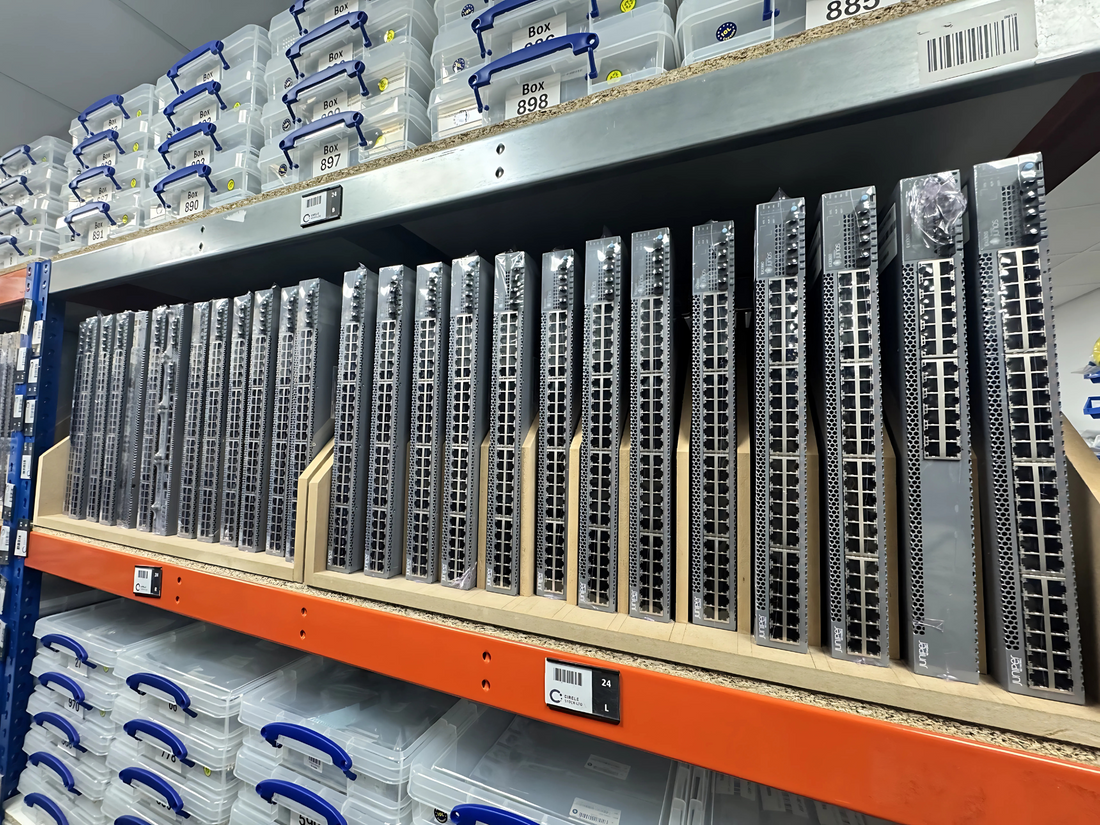
Understanding Virtual Chassis in Juniper Switches
Share
Virtual Chassis and the Challenge of Network Expansion
As companies expand, so does the size of their networks. More switches usually mean more configuration work and greater risk of errors. With Virtual Chassis, Juniper Networks provides a way to link multiple switches into a single device, simplifying management while maintaining performance.
What is Virtual Chassis?
Virtual Chassis is a feature that allows administrators to interconnect up to 10 Juniper EX Series or QFX Series switches into a unified system. From a management perspective, the cluster behaves like one switch. This eliminates the complexity of configuring and monitoring multiple devices individually, reducing operational overhead.
Each switch within the Virtual Chassis is assigned a unique role:
- Master – the switch responsible for managing the configuration and forwarding table.
- Backup – a standby device ready to take over if the master fails.
- Line Cards – member switches that manage traffic forwarding.
This design ensures redundancy, simplified configuration without requiring expensive chassis-based hardware.

Key Benefits of Virtual Chassis
-
Simplified Management
Instead of logging into ten different switches, administrators can control the entire Virtual Chassis through a single management IP address. -
Scalability
As business demands grow, additional switches can be seamlessly added to the chassis without major disruptions. -
High Availability
With built-in redundancy between the master and backup switches, the risk of downtime is minimised. -
Cost Efficiency
Organisations gain many of the benefits of a large modular chassis system without the high price tag.
How Virtual Chassis Works
Virtual Chassis leverages high-speed interconnects through dedicated Virtual Chassis ports or uplink modules to form a backplane between member switches. This logical backplane allows for:
- Distributed forwarding: Traffic is processed by the nearest member switch rather than being sent to a central unit.
- Centralised control: All configuration and policy enforcement remain consistent across the entire chassis.
- Seamless failover: If the master switch fails, the backup automatically assumes control with minimal service disruption.
Deployment Scenarios
- Campus Networks – Simplifying the management of multiple access layer switches.
- Data Centers – With Virtua Chassis, organisations gain a cost-effective alternative to traditional large chassis systems.
- Branch Offices – Reducing hardware complexity while maintaining enterprise-grade resilience.
Best Practices for Implementing Virtual Chassis
-
Plan Roles Carefully
Assign master and backup roles to switches with the highest performance and reliability. -
Use Redundant Links
Ensure inter-switch connections are designed to prevent single points of failure. -
Keep Firmware Consistent
All switches should run the same Junos OS version to avoid compatibility issues. -
Monitor Regularly
Even though the system acts as one, keep an eye on the health of individual members.
Conclusion
Juniper’s Virtual Chassis technology offers enterprises a powerful way to reduce complexity, enhance reliability, and prepare their networks for future growth. By integrating multiple switches into a single logical system, organisations can enjoy the flexibility of a modular chassis without the associated costs. For businesses seeking scalability and simplified operations, Virtual Chassis remains a trusted solution for modern networking needs.
At Circle Stock LTD, we provide businesses with access to Juniper’s Virtual Chassis technology, offering both the hardware and expertise needed to design scalable, resilient networks.From refurbished EX and QFX switches to supported MX platforms, our solutions help organisations reduce complexity, improve reliability, and leverage Virtual Chassis to future-proof their infrastructure.
View our range of Networking Equipment – Circle Stock Ltd
